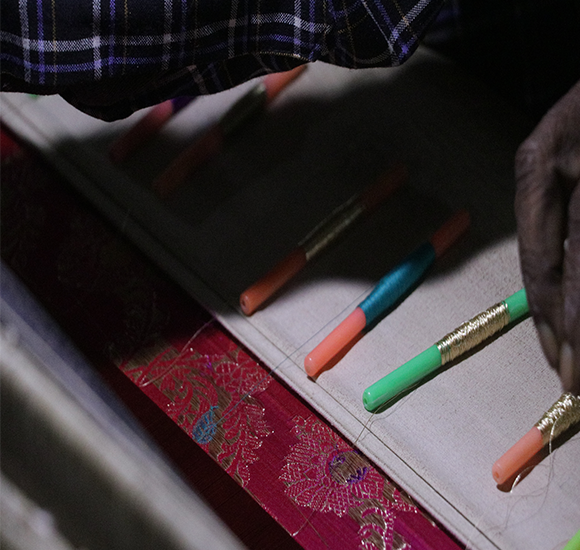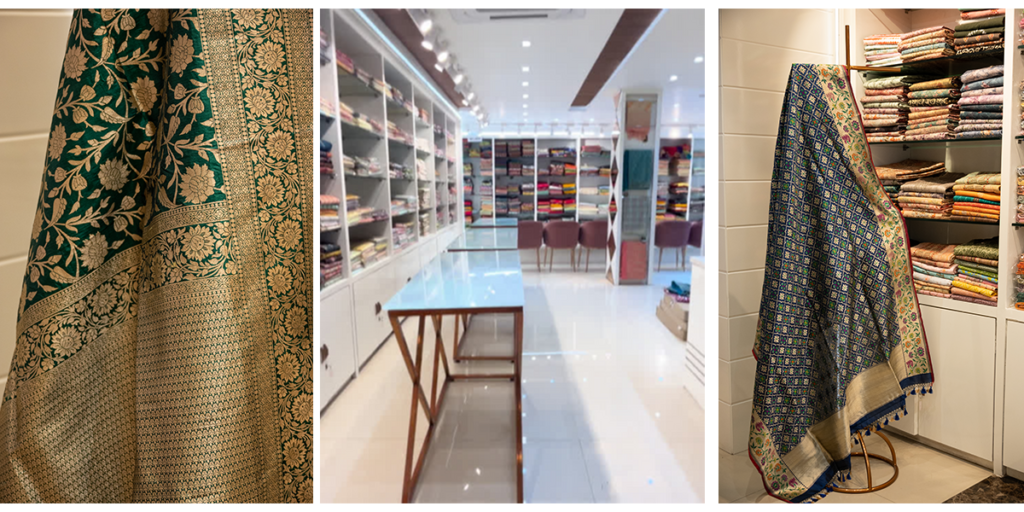

Weaving Techniques:
The Banarasi silk saree, suits & Dupatta is much more than just a piece of fabric; it is a labor of love, woven meticulously by master craftsmen who have honed their skills over generations. The weaving process involves various intricate techniques, the most prominent being the kadwa (warp) and the buta (motif).
Kadwa weaving involves the use of a handloom where the weaver meticulously interlaces the warp threads with the weft, creating a rich tapestry of designs and patterns. This technique requires immense precision and patience, as even the slightest deviation can alter the entire motif.
The buta, or motif, is perhaps the most defining feature of a Banarasi saree. From intricate floral patterns to elaborate geometric designs, each motif is a testament to the weaver’s creativity and dexterity. These motifs are often inspired by nature, mythology, and historical architecture, adding depth and symbolism to the saree.
Another distinctive aspect of Banarasi sarees is the use of gold and silver zari threads, which lend a regal allure to the fabric. These metallic threads are painstakingly spun and woven into the fabric, creating a shimmering effect that is synonymous with luxury and sophistication.
Artisan Stories:
The Banarasi silk saree, suits & Dupatta is much more than just a piece of fabric; it is a labor of love, woven meticulously by master craftsmen who have honed their skills over generations. The weaving process involves various intricate techniques, the most prominent being the kadwa (warp) and the buta (motif).
Kadwa weaving involves the use of a handloom where the weaver meticulously interlaces the warp threads with the weft, creating a rich tapestry of designs and patterns. This technique requires immense precision and patience, as even the slightest deviation can alter the entire motif.The buta, or motif, is perhaps the most defining feature of a Banarasi saree. From intricate floral patterns to elaborate geometric designs, each motif is a testament to the weaver’s creativity and dexterity. These motifs are often inspired by nature, mythology, and historical architecture, adding depth and symbolism to the saree.Another distinctive aspect of Banarasi sarees is the use of gold and silver zari threads, which lend a regal allure to the fabric. These metallic threads are painstakingly spun and woven into the fabric, creating a shimmering effect that is synonymous with luxury and sophistication.

Tanchoi Banaras:

At Tanchoi Banaras, we are committed to honoring this rich legacy of craftsmanship and artistry. Each of our sarees is a testament to the skill and dedication of our artisans, who pour their heart and soul into every creation. From our signature kadwa weaving technique to our exquisite motifs inspired by Banaras’ rich cultural tapestry, every aspect of our sarees reflects the timeless elegance and unparalleled craftsmanship of Banarasi silk. As we celebrate the craftsmanship behind Banarasi silk sarees, let us also pay homage to the artisans whose hands weave magic into every thread. Their stories may be untold, but their legacy lives on in the timeless beauty of Banarasi sarees.
